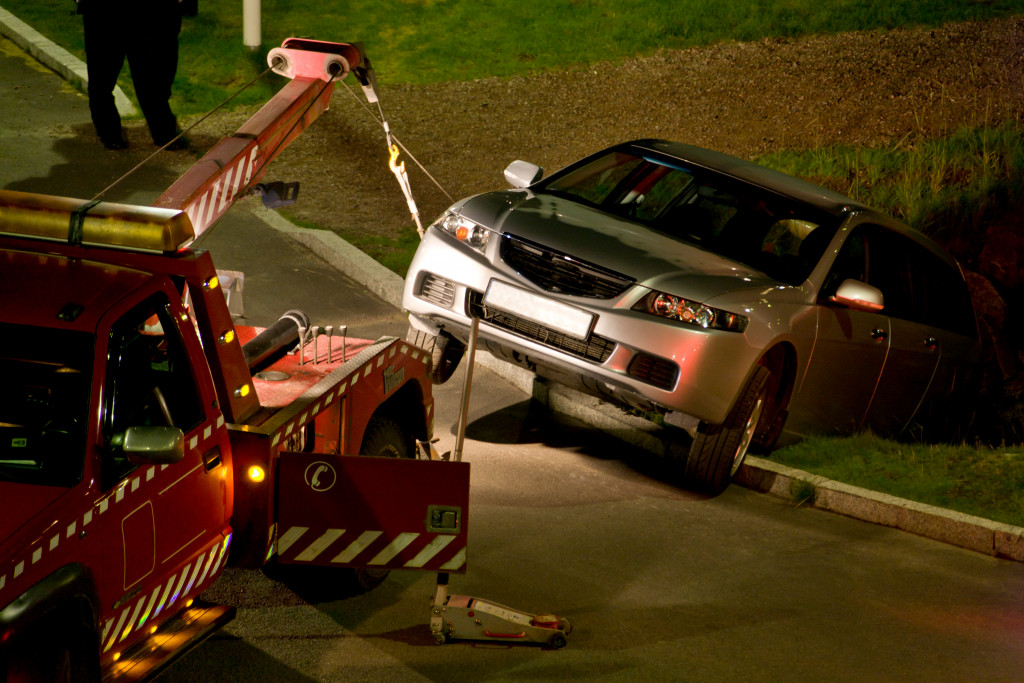• Poor infrastructure, unsafe vehicles, traffic congestion, and irresponsible driving are key factors that contribute to a community being accident-prone.
• Optimizing traffic flow, increasing public transportation options, improving the road infrastructure, and implementing parking restrictions can reduce the chance of accidents occurring.
• Drivers should be encouraged to take a driver improvement course, so they are aware of the importance of obeying traffic laws.
• Local authorities should also take action to reduce substance abuse among drivers, as this can increase the risk of accidents.
Accidents can occur in any community, but some are more accident-prone than others. Knowing what the root causes of accidents are in your community can help you create targeted programs and initiatives to reduce them. Here are vital things you need to know about what causes a community to be accident-prone.
Poor Infrastructure
Poor infrastructure is one of the leading causes of accidents in communities. This includes roads that are not well-maintained, lack of stop signs, inadequate lighting or poor visibility at intersections, and lack of sidewalks or pedestrian crossings. All these factors can contribute to an increase in accidents as people don’t have safe pathways for travel or clear visual cues when crossing from one side of a road to another.
Unsafe Vehicles
Another factor that contributes to a community being accident-prone is having unsafe vehicles on the road. This could include cars, trucks, ATVs, motorcycles, bicycles, etc., that do not meet safety standards or have faulty brakes or steering systems. It’s essential for vehicles on the road to be regularly inspected and maintained in order for them to be safe and reduce the risk of accidents occurring due to mechanical failure.
Traffic Congestion

Traffic congestion is another factor contributing to a higher rate of accidents occurring in a community. When there are too many cars on the road at once, it can lead to longer wait times at intersections which increases the chances of someone running a red light or making an illegal turn due to impatience or frustration with delays caused by traffic congestion. Additionally, traffic congestion often leads people to drive recklessly or cut through neighborhoods or parking lots to get around slower-moving vehicles on main streets.
Fortunately, there are plenty of things that can be done to prevent traffic congestion. Here are the best ways:
Optimize Traffic Flow
By creating a system of one-way streets or timed traffic lights, you can reduce the number of cars getting stuck at intersections and create a better flow for everyone.
Increase Public Transportation Options
Offering more public transportation options such as buses, rideshares, or ferries can reduce the number of cars on the road, thus eliminating some of the traffic congestion and resulting in safety hazards.
Improve Road Infrastructure
Adding more lanes to roads can help reduce bottlenecks and improve overall flow for everyone. Additionally, adding curve warning signs or additional lighting can help alert drivers to potential dangers that may be present on certain stretches of road.
Implement Parking Restrictions
Limiting parking on certain streets or in certain areas can help reduce the number of cars clogging up intersections and create a smoother flow for everyone.
By preventing traffic congestion, you can reduce the chances of accidents occurring in your community.
Unsafe Driving Habits
Unsafe driving habits such as speeding, distracted driving (e.g., texting while driving), running red lights, tailgating other drivers, etc., can all contribute to increased rates of accidents occurring in a community as well. Drivers on the roads in any given community need to practice safe driving techniques, so they don’t increase their risk—or anyone else’s risk—of getting into an accident due to careless behavior behind the wheel.
For this to happen, drivers should be required or encouraged to undergo an 8-hour basic driver improvement course. This course teaches drivers the importance of obeying traffic laws and maintaining safe practices on the road, which can help reduce the rate of accidents in a community. It can also help drivers control their emotions when driving, so they are less likely to be aggressive and act in a way that increases the risk of an accident.
Alcohol/Drug Use

Finally, alcohol and drug use while operating any type of vehicle is also one of the major contributing factors when it comes to why communities become more accident-prone over time if this issue isn’t addressed adequately by local authorities or public health initiatives aimed at reducing substance abuse among drivers on its roads and highways.
Many factors can lead to a community becoming more accident-prone. Poor infrastructure, unsafe vehicles on the road, traffic congestion, and even driver behavior all play a role in determining how safe or dangerous an area is for drivers.
Fortunately, with proper planning and implementation of targeted programs aimed at reducing these issues such as optimizing traffic flow, increasing public transportation options, improving the road infrastructure, implementing parking restrictions, and enforcing basic driver improvement courses—communities can become safer places for everyone involved. It’s important to remember that safety should always be our number one priority when it comes to dealing with accidents in any given community.

